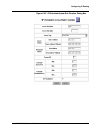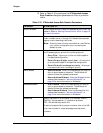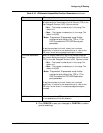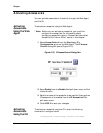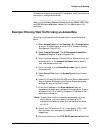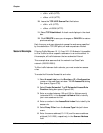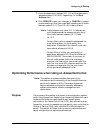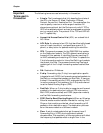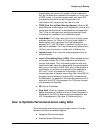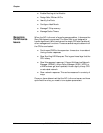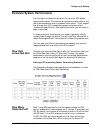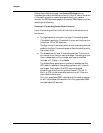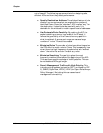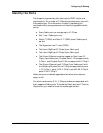
9-32 Avaya P550R, P580, P880, and P882 Multiservice Switch User Guide, v5.3.1
Chapter
Important
Term s used in
this section
The following terms are used extensively in this section:
■ 5-tuple: The five elements that fully describe the criteria of
the ACL rule: Source IP/ Mask, Destination IP/Mask,
Protocol, Source Port, Destination Port. The masks allow the
user to specify a narrow or wide range of matches. All
elements are optional, but the Ports are only valid if TCP or
UDP is the selected protocol and can be expressed as a single
port or range of ports. The protocol ID for TCP and UDP is 6
and 17 respectively.
■ Access List/Access Control List (ACL): an ordered list of
ACL Rules.
■ ACL Rule: An element of an ACL that identifies traffic based
upon a 5-tuple (condition), and specifies a queue (0-7),
permit, or deny action for packets matching the condition.
■ CPU: The general processor for the P580/P882 that resides
on the Supervisor module. The CPU determines whether to
forward or filter packets. It identifies Flows by resolving IP-
to-MAC addressing and matching ACL Rules. It updates the
F-chip’s forwarding cache for future Fast Path’ing of packets
that match this Flow. The process of examining Flows and
updating all of the F-chips’ forwarding caches is called Slow
Path.
■ DA: Destination IP Address.
■ F-chip: Forwarding-chip (F-chip) is an application specific
integrated circuit (ASIC) that forwards recognized packets via
Fast Path or unrecognized packets via Slow Path. It learns or
flushes L3 forwarding entries (L3FE) as directed by the CPU.
In earlier versions of the hardware, the F-Chip was referred
to as the Packet Routing Engine (PRE).
■ Fast Path: When an F-chip is able to recognize and forward
a packet to the destination port without CPU intervention.
Both FIRE (media modules) and FORE (supervisor module)
are Fast Path forwarding mechanisms.
■ FIRE (Fast In-Band Routing Engine): When an 80-series
Ethernet media module has been licensed for routing, the F-
Chips on that module provide fast, direct forwarding of L3
packets to their destination ports. The destination ports can
be on the same module or a different module.
■ Flow: A set of routed packets that get the same Layer 3
Forwarding Entry (L3FE) due to equivalent address
characteristics. The complexity of this equivalence will affect
the frequency that packets match a single Flow. In the




